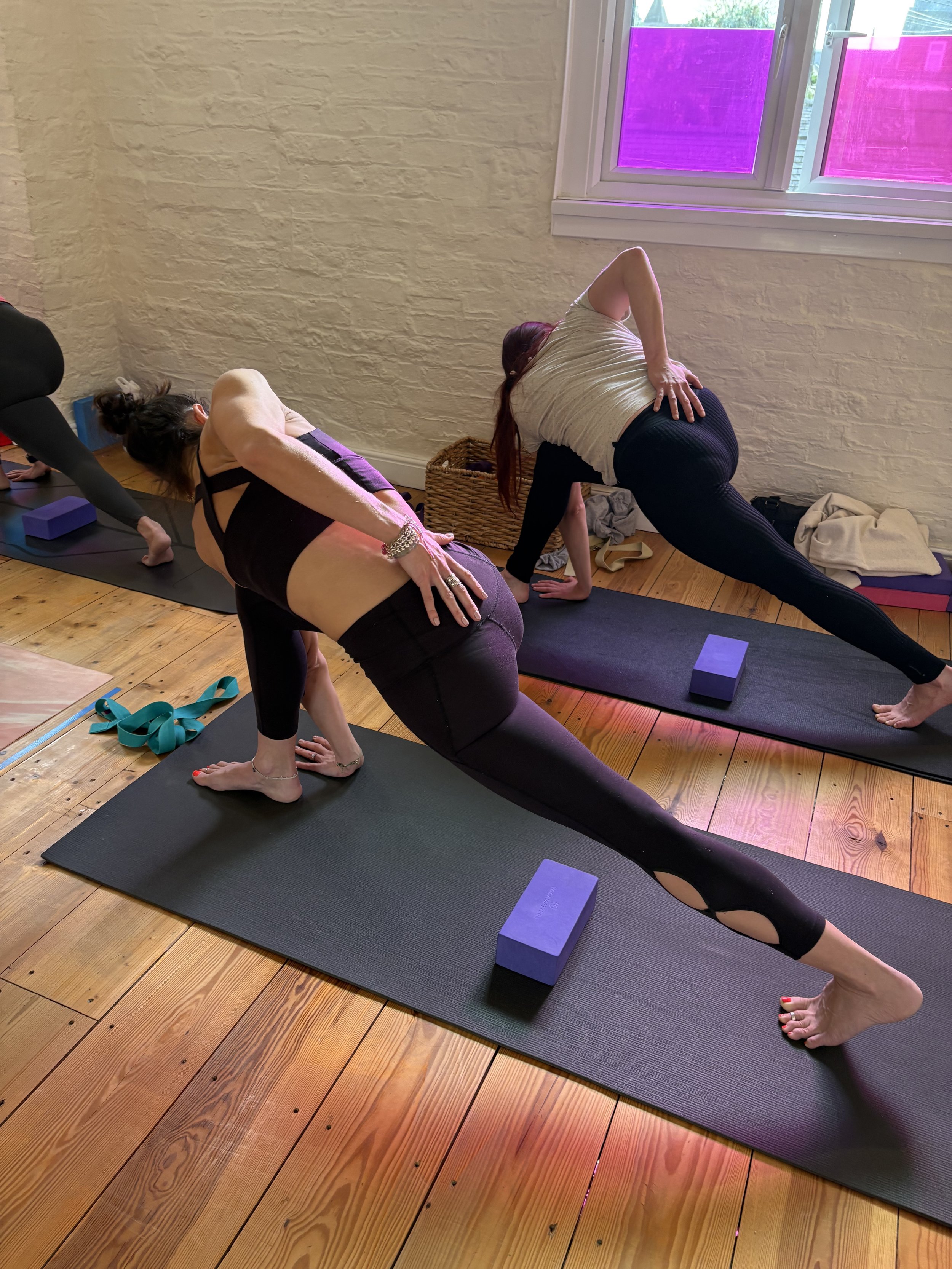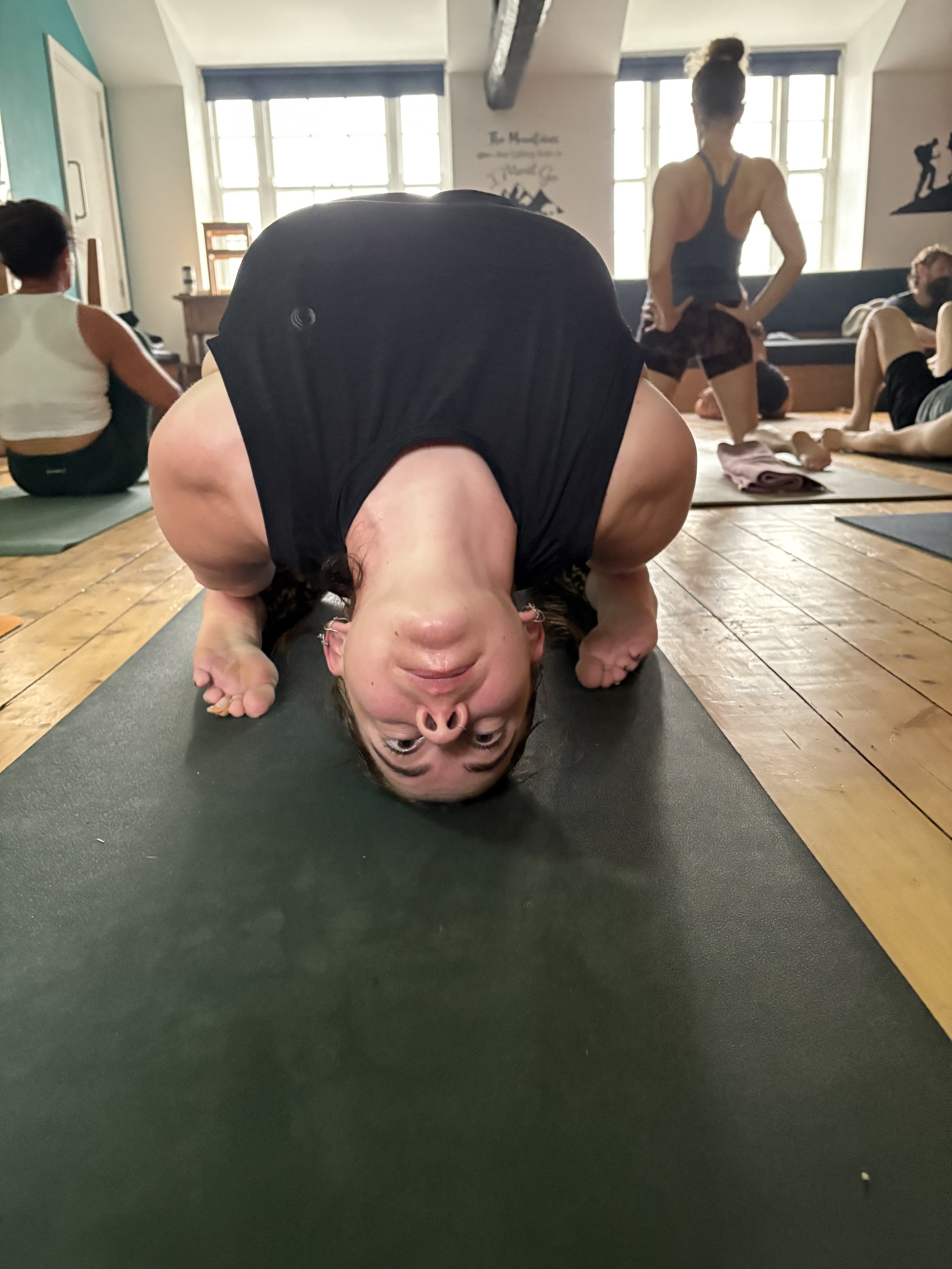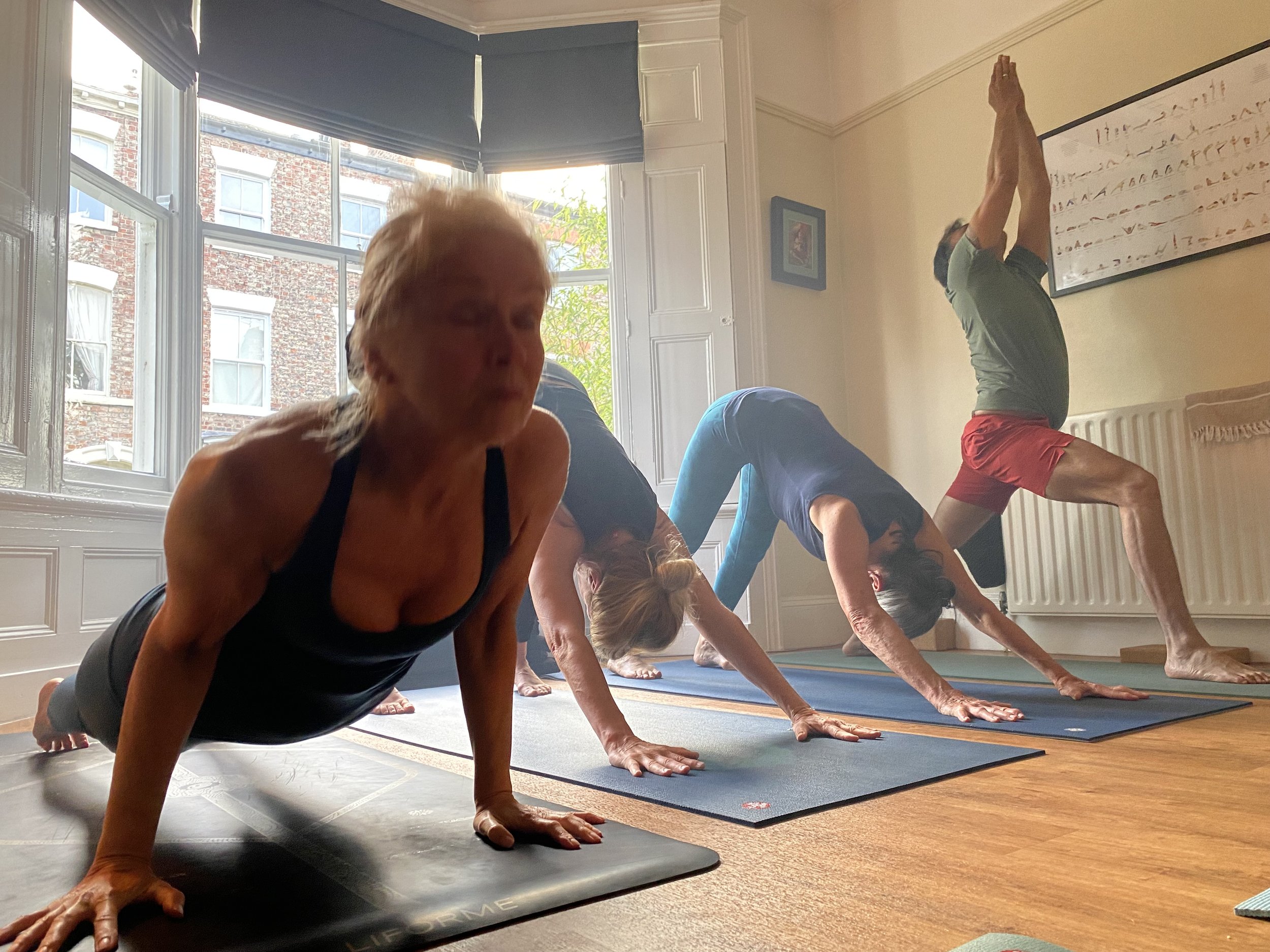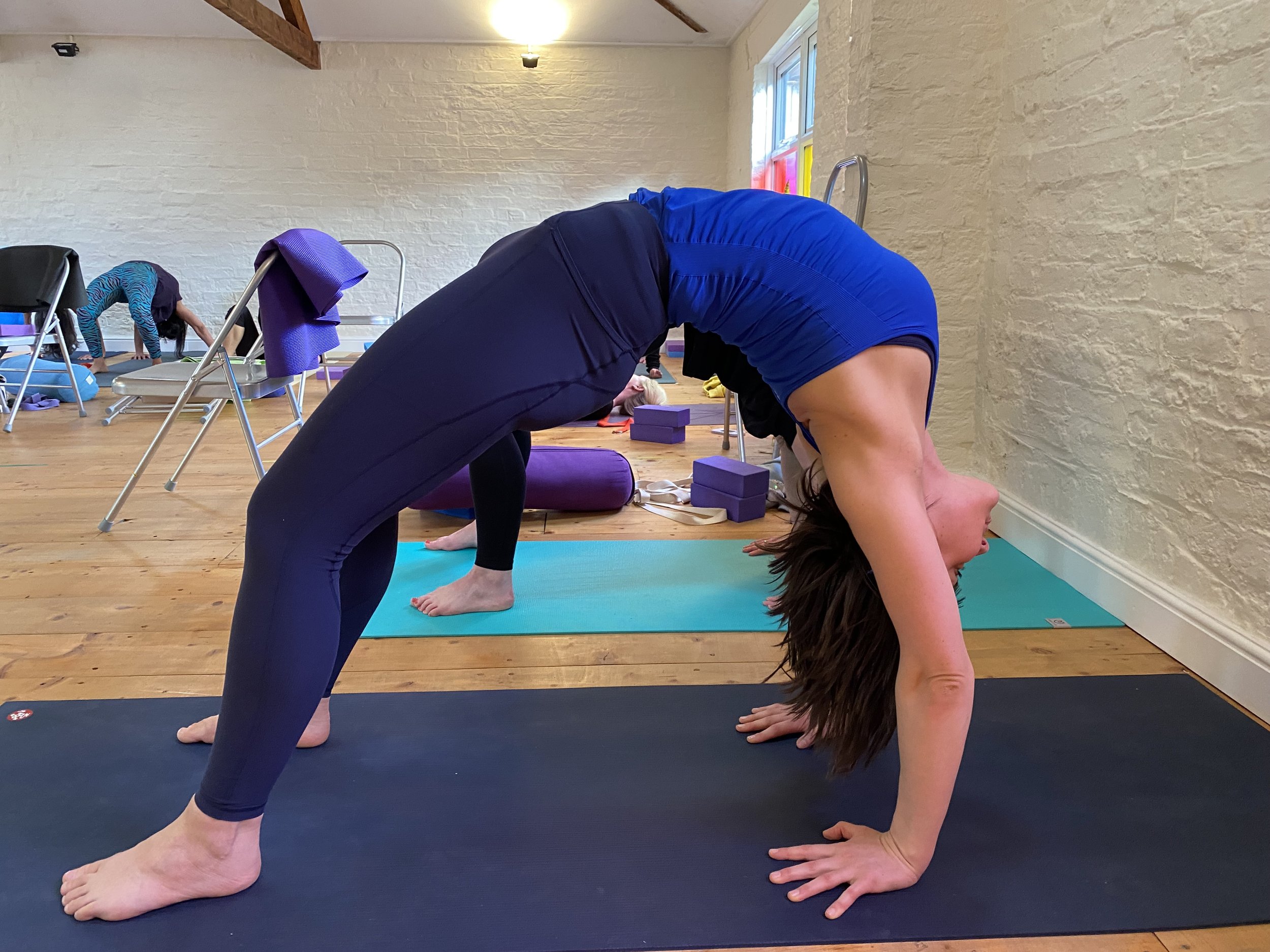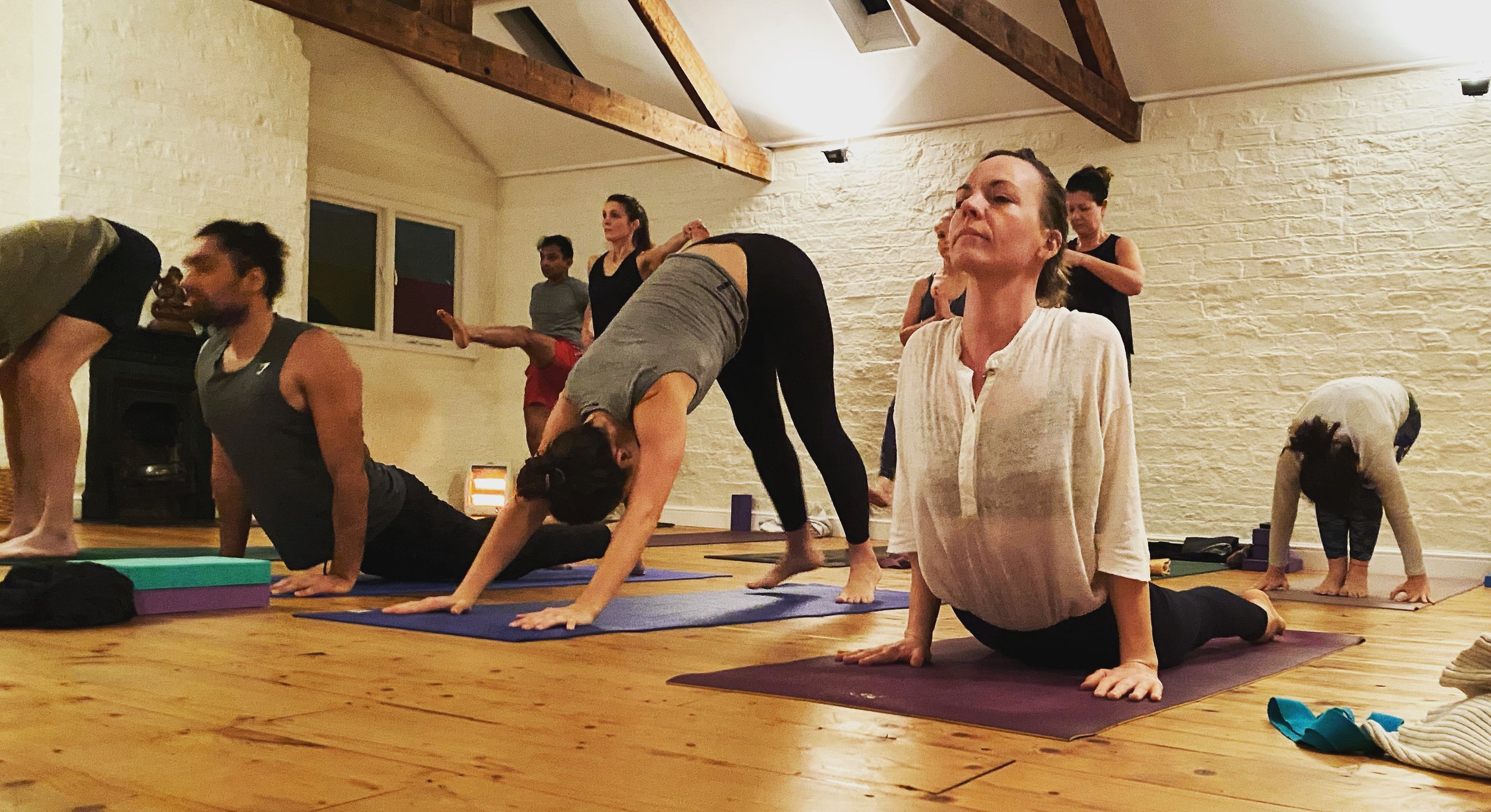
Your Ashtanga Yoga Journey Begins Here.
Why Ashtanga Yoga?
-
Structure.
Ashtanga yoga is a structured and disciplined practice centered around a set sequence of postures that are performed in a specific order. This repetition fosters familiarity and creates a strong foundation for growth, as practitioners can focus on refining their technique, building strength, and deepening their breath with each session. Over time, the consistent sequence becomes a moving meditation, allowing the mind to quiet as the body flows through poses it knows well. The structured nature of Ashtanga also helps students track their progress, offering a sense of accomplishment as they master challenging poses and move deeper into the series. This combination of repetition and progression cultivates a sense of discipline, self-awareness, and mindfulness.
-
Rooting.
Mysore yoga, rooted in the Ashtanga tradition, is a self-paced, individualised practice where students follow a prescribed sequence of postures under the guidance of an experienced teacher. Unlike traditional led classes, Mysore-style sessions allow practitioners of all levels—beginners and advanced students alike—to practice in the same space. Beginners receive detailed, hands-on instruction as they learn the foundational poses, while advanced students deepen their practice by refining postures or advancing through the sequence at their own pace. This format fosters a sense of community while respecting individual progress, making it an inclusive and adaptable approach to yoga.
-
Growth.
In Ashtanga yoga, especially in the Mysore style, students experience substantial one-on-one time with the teacher, which accelerates growth and development. Unlike a led class, where the teacher guides the group through the same sequence, Mysore practice allows each student to progress at their own pace, working on their unique needs within the Ashtanga sequence. The teacher offers personalised adjustments, guidance, and corrections tailored to support individual growth and challenges. The individualised attention also ensures that students practice safely, with proper alignment and technique, making it a transformative and intimate method of learning yoga. This fosters a deeper teacher-student connection, enhancing the learning experience and encouraging consistent progress. With individual attention, students can refine their alignment and technique, ensuring a safe and transformative practice that supports long-term growth.
-
Journey.
The Ashtanga yoga community is a vibrant, global network of practitioners united by their shared dedication to this dynamic and transformative practice. Rooted in discipline and self-discovery, the community thrives on the principle of mutual support, where practitioners of all levels come together to celebrate the journey of growth. Whether in a Mysore room or practicing virtually online, individuals share their experiences, challenges, and triumphs, fostering a sense of connection and encouragement. The practice itself becomes a common language, transcending boundaries of culture and background, as each person finds their own rhythm while honoring the tradition. This collective energy fuels personal transformation and strengthens the bonds within the community, reminding everyone that the path is as significant as the destination.
“The practice mat should be laid out as though it is our funeral pyre. The fire of asana is used to burn the residue of muscular and organic tensions, as well as mental conceptualisation and bodily identification. The differentiations projected by the inner organ (antahkarana): intellect (buddhi), mind (manas), ego (ahamkara), are reduced to ashes”
